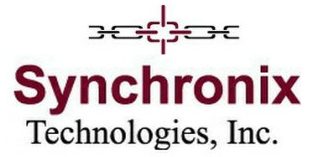The Theory of Constraints perspective on Continuous Improvement
Taking Continuous Improvement to a new level
Today, Kaizen is the de facto standard for continuous improvement in many manufacturing businesses; and where it isn’t, there typically is little improvement going on, continuous or otherwise.
Kaizen is commonly interpreted to mean improvement, and more specifically continuous improvement, in a manner that is slow, incremental, but constant.
Slow? Incremental? Hmmm … well, Theory of Constraints isn’t like that.
The five focusing steps of the Theory of Constraints provide a true process (in contrast to the more common “checklist”) for continuous improvement which is not slow, not incremental – it’s fast, with huge ramp-steps in improvement. For example, productivity increased by 25% on Go-Live. Work in process reduced by 70% within days of Go-Live. Lead times reduced by 70% in one traditional manufacturing cycle-time following Go-Live.
THEN, within the boundaries of this massive improvement, there is indeed a form of Kaizen – genuine incremental improvement– based on a Theory of Constraints technique called Buffer Management.
Laser-accurate improvements with Buffer Management
Buffer Management is a technique where the very precise obstacles to improvement are surfaced (by tracking some very specific issues), analyzed for priority, then addressed. No improvements are made because a checklist says you should; they are made because they quite specifically are blocking a certain improvement, and the precision can be almost laser-like. This focus is one of the most powerful aspects of the Theory of Constraints.
This is also one of those areas where Lean and Theory of Constraints could be good playmates, or could become either/or.
Can Lean and Theory of Constraints play nicely in the sand box?
If a company applies conventional Kaizen thinking to an environment where (for example) the Theory of Constraints technique known as Synchronous Manufacturing is in place, it will lead to many improvements that are NOT a priority according to Buffer Management. And if resources to work on improvements are in short supply, as they usually are … this could translate into improvements being made according to “the book” which are actually at the expense of the improvements that will most improve competitive-edge performance – the improvements identified by Buffer Management.
So, if a company wants to integrate Lean Kaizen-type improvements within a Theory of Constraints implementation, one challenge becomes to set a basis for prioritizing the improvements that will be worked on.
This pulls in three elements or concepts of the Theory of Constraints.
Theory of Constraints as a basis for priority-setting
First, is the concept of “Necessary Conditions.” These take precedence even over the Profit Goal – for example, a violation of a safety issue should be addressed as the highest priority of all, even if it called for a production drop.
Second, is an understanding of the 5 Focusing Steps of the TOC; Identify the constraint(s), then decide how to EXPLOIT the constraint(s), then SUBORDINATE everything else to that decision … and etc. The 5 Focusing steps provide one of the few true PROCESSES of continuous improvement in play today; checklists, while often useful, don’t constitute a process.
Third, is an understanding of the fundamental measurements – Throughput, Investment, Operating Expense, and their connection to Net Profit. These measurements hold a mirror up to management’s face in terms of, are the activities you consider to be “improvements,” REALLY improvements?
With these in place, there is a solid framework for prioritizing the improvements arising from Buffer Management and those arising from the Lean approach; the outcome is a basis for continuous improvement that is focused, highly leveraged, oriented towards profit yet respectful of the attractions of attacking waste of all kinds.
